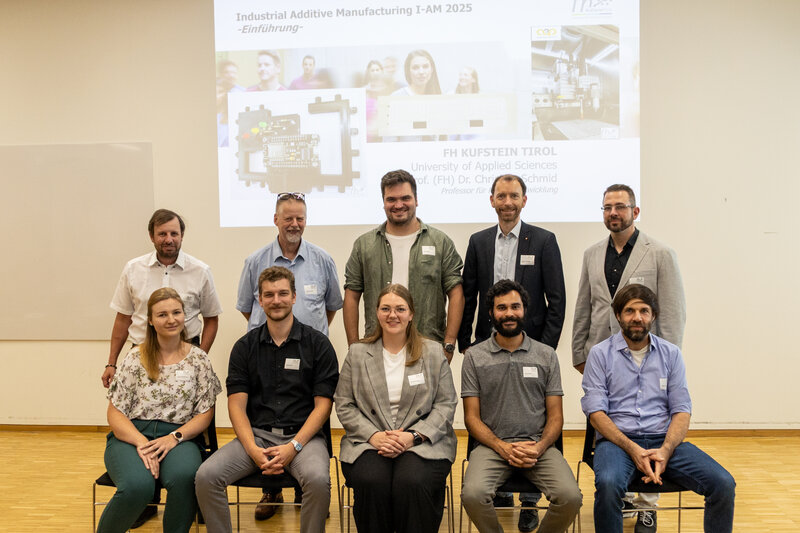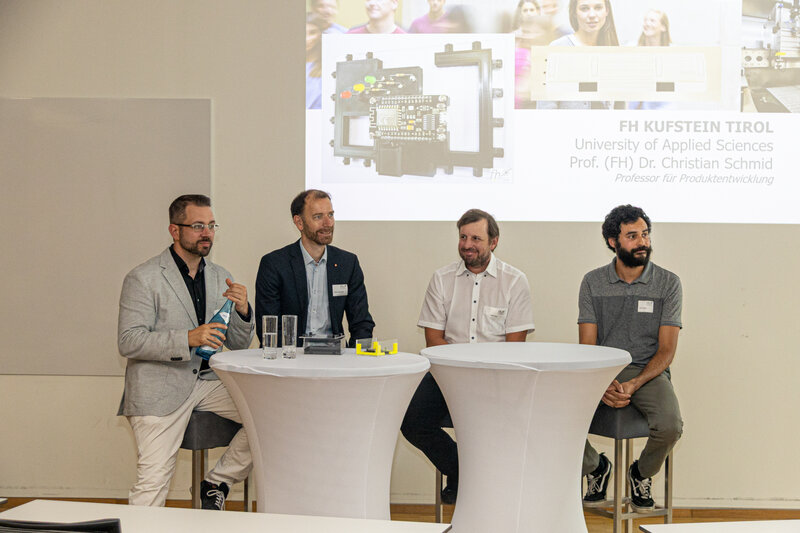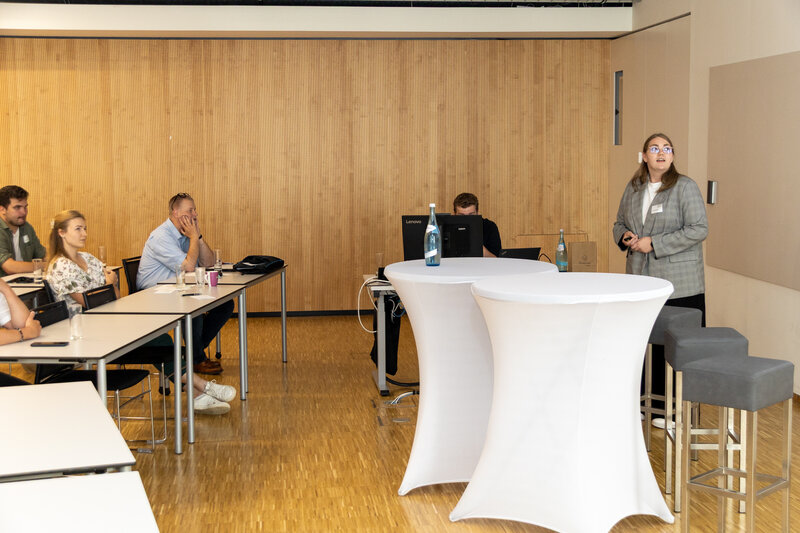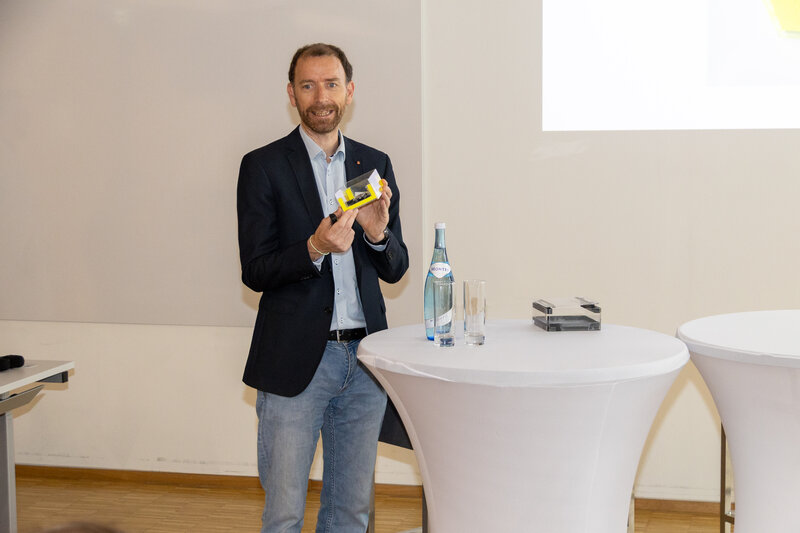HOW 3D PRINTING IS SHAKING UP THE INDUSTRY
- 22.07.2025
- Event Review
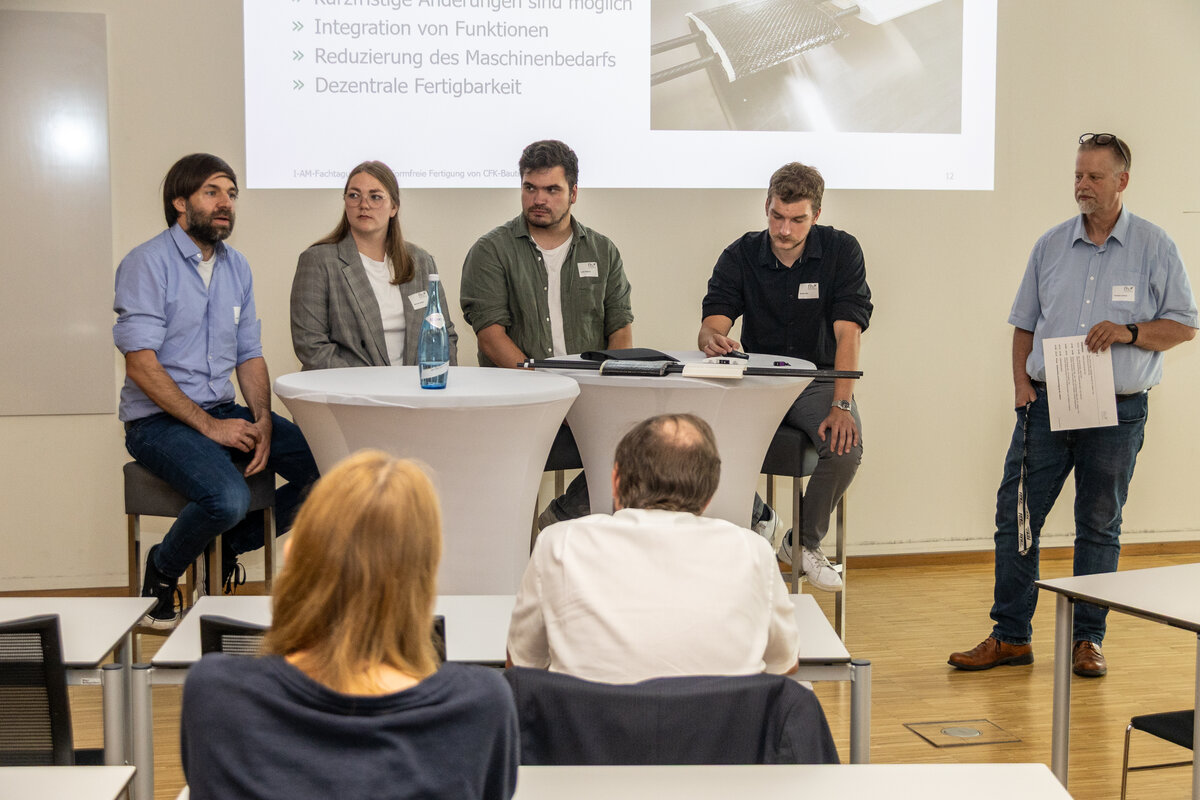
Panel discussion at the I-AM Symposium 2025 at University of Applied Sciences Kufstein Tirol: Experts and researchers discuss current trends and challenges in industrial additive manufacturing.
How 3D printing goes from prototype to series production, why it shines in extreme conditions and how it can become more sustainable - at the I-AM Symposium 2025 at the University of Applied Sciences Kufstein Tirol, innovative ideas met industrial reality.
On 18 June 2025, this year's symposium of the Industrial Additive Manufacturing (I-AM) working group - an association of lecturers and researchers working on applications, processes and systems for additive manufacturing - took place at the FH Kufstein Tirol. The afternoon focussed on current challenges, practical research and technological advances in industrial additive manufacturing. The event was moderated by Prof. (FH) Dr Christian Schmid, Professor (FH) for Product Development, together with Sophia Brockschmidt, MSc, research assistant in the field of Industrial Engineering & Management / Smart Products & AI-driven Development.
In his welcome address, Schmid emphasised the relevance of additive manufacturing for industrial applications beyond research. He referred to trends such as the integration of additive processes into existing process chains, sustainability through decentralised manufacturing, new materials and hybrid production processes.
ADDITIVE MANUFACTURING IN TRANSITION
Harald Spiegl from WESTCAM Technologies GmbH, a service provider specialising in digital process chains, kicked off the lecture programme. In his presentation on additive series production, Spiegl vividly demonstrated how 3D printing masters the transition from prototype to series production. Using specific examples - such as personalised joysticks, functional parts in tractors or innovative spare parts strategies - he illustrated the technology's potential in terms of flexibility, individualisation and cost savings.
This was followed by a presentation by Markus Ehrlenbach, MSc and Asc. Prof. (FH) Michael Petke, MA from the University of Applied Sciences Kufstein Tirol presented their project Soldercasting for the production of hybrid assemblies. The aim is to realise functional prototypes with integrated electrical lines by combining 3D printing and solder metal efficiently and without additional connecting elements - a promising approach for the embedded electronics sector.
Noah Bavajee, BSc, also from University of Applied Sciences Kufstein Tirol, presented intuitive operating concepts for welding automation and additive manufacturing in the next lecture. His work focuses on the user-centred design of technical interfaces in order to facilitate access to highly complex manufacturing processes and minimise sources of error.
After a lively panel discussion and break, the second part of the afternoon was opened by Prof Dr Fabian Riß from Rosenheim University of Applied Sciences. In his presentation on in-situ monitoring for wire-based additive manufacturing with lasers, he focussed on quality assurance in real time - a key topic for industrial applications.
NEW PERSPECTIVES, YOUNG IDEAS: SHAPING AN ADDITIVE FUTURE
Lukas Matthias, MSc then reported on the BeSoGreat project, which focusses on sustainable raw materials for 3D printing. The aim is to make bio-based materials such as natural fibres from waste materials usable for technical applications.
Bernarda Kessler, BSc analysed the material properties of 3D printed parts under alpine environmental conditions. Her research focusses on the resilience of additively manufactured components in extreme weather conditions - particularly relevant for outdoor applications or alpine rescue systems.
The following presentation by Quentin Hirtl, BSc, dealt with the form-free production of CFRP components (carbon fibre reinforced plastics). The focus was on the combination of design freedom, lightweight construction and structural strength - with potential for use in aviation or vehicle construction, for example.
At the end of the programme, Schmid and Brockschmidt hosted another panel discussion and a joint wrap-up, followed by a get-together that provided space for personal exchange.
The I-AM Symposium 2025 made it clear how versatile additive manufacturing is already being used today - from components ready for series production to bio-based materials and functional high-tech components. It reflected the strong interplay between research, application and student innovation at the University of Applied Sciences Kufstein Tirol.
Links:
- Industrial Engineering & Management | ft
- Makers Lab
- WESTCAM | Website
- TH Rosenheim | Website

